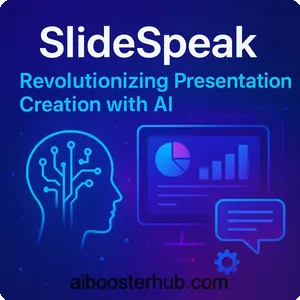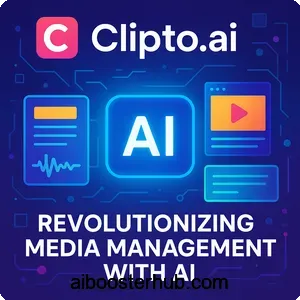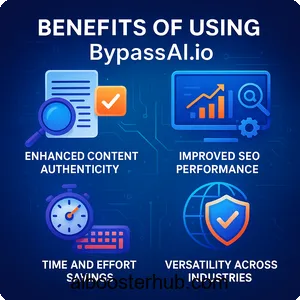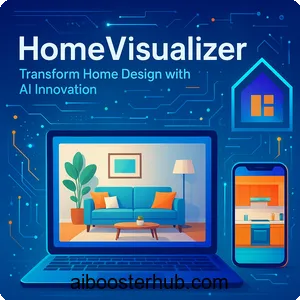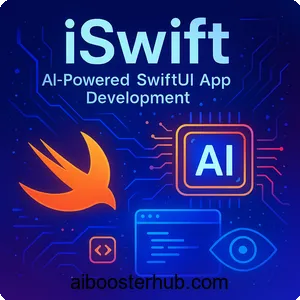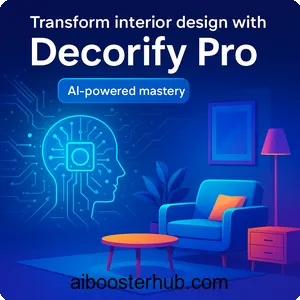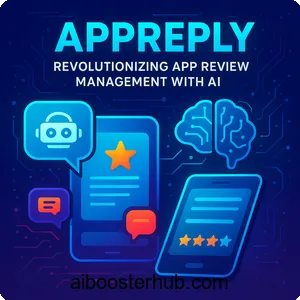Brand Bowl: Revolutionizing Branding with AI-Powered Efficiency
This article explores Brand Bowl, an innovative AI-powered platform designed to streamline the creation of branding guidelines for designers, agencies, and businesses. With a focus on its features, benefits, and practical applications, this comprehensive guide dives into how Brand Bowl leverages artificial intelligence to simplify brand book creation, ensuring consistency and efficiency.
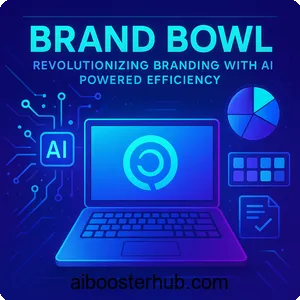
Content
Toggle1. Introduction to Brand Bowl
What is Brand Bowl?
Brand Bowl is an AI-powered platform that transforms the way designers, agencies, and businesses create and share branding guidelines. By harnessing artificial intelligence, Brand Bowl automates tedious tasks, such as calculating logo clearspace, organizing brand assets, and generating color palettes, allowing users to produce professional brand books in minutes. Unlike traditional methods that rely on manual processes and scattered documents, Brand Bowl offers a streamlined, cloud-based solution that centralizes brand management. This makes it a game-changer for professionals seeking to maintain consistency across their brand identity while saving time and effort.
Why AI matters in branding
The integration of AI into branding is a growing trend, as it enables faster decision-making, reduces human error, and enhances creativity. Brand Bowl stands out by leveraging AI to simplify complex tasks, such as converting color codes across different formats or organizing multiple logo variations. This not only boosts productivity but also ensures that branding guidelines are precise and accessible. For businesses and designers, this means less time spent on repetitive tasks and more focus on strategic and creative work, making Brand Bowl a vital tool in the AI-driven branding landscape.
2. Key features of Brand Bowl
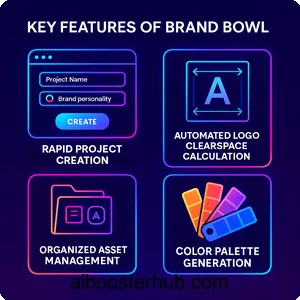
Rapid project creation
One of Brand Bowl’s standout features is its ability to create a new branding project in seconds. Users simply name the project, select a brand personality, and set a public URL, and the platform does the rest. This eliminates the need for lengthy setup processes, allowing designers to dive straight into crafting their brand guidelines. The AI-driven setup ensures that the project aligns with the brand’s identity from the outset, providing a solid foundation for further customization.
Automated logo clearspace calculation
Maintaining proper logo clearspace is crucial for brand consistency, but calculating it manually can be error-prone. Brand Bowl’s AI automatically calculates the clearspace for uploaded logos, ensuring accuracy without the need for manual measurements. This feature is particularly valuable for designers working with multiple logo variations, as it guarantees that each version adheres to professional standards.
Organized asset management
Brand Bowl allows users to upload and organize multiple logo variations, icons, and other brand assets in one centralized location. The platform’s intuitive interface ensures that assets are easily accessible, reducing the chaos of scattered files. This is especially beneficial for teams collaborating on branding projects, as it streamlines workflows and keeps all assets organized.
Color palette generation
Creating a cohesive color palette is a cornerstone of effective branding. Brand Bowl simplifies this process by allowing users to input HEX codes, from which it automatically generates RGB and CMYK equivalents. Users can label colors with descriptive names, such as “Midnight Blue” or “Sunset Red,” and mark primary colors to emphasize their role in the brand’s identity. The result is a visually appealing palette that ensures consistency across all brand materials.
Typography consistency
Typography plays a critical role in brand recognition, and Brand Bowl ensures consistency by supporting Google Fonts and custom font uploads. Users can define font styles and weights, ensuring that typography aligns with the brand’s personality. The platform’s AI organizes these settings into a cohesive brand book, making it easy to share typography guidelines with team members or clients.
Seamless integrations
Brand Bowl integrates with third-party tools, such as Adobe Illustrator, through a dedicated plugin. This allows designers to upload brand assets directly from their design software, streamlining the workflow. The platform also supports sharing features, enabling users to collaborate with teams, gather feedback, and make decisions without relying on external tools like Google Docs.
3. Benefits of using Brand Bowl
Time efficiency
By automating repetitive tasks, Brand Bowl saves hours of manual work. Tasks like calculating logo clearspace, converting color codes, or organizing assets are handled by AI, allowing designers to focus on creative aspects. This efficiency is particularly valuable for freelancers and agencies managing multiple projects under tight deadlines.
Enhanced brand consistency
Consistency is the backbone of a strong brand identity. Brand Bowl ensures that all elements—logos, colors, and typography—are aligned across all materials. By centralizing assets and guidelines in one platform, it reduces the risk of inconsistencies, making it easier for teams to maintain a unified brand presence.
Simplified collaboration
Brand Bowl’s sharing and feedback features make collaboration seamless. Teams can access project briefs, provide input, and make decisions within the platform, eliminating the need for multiple tools or lengthy email threads. This fosters better communication and ensures that everyone is on the same page.
Accessibility for all skill levels
Whether you’re a seasoned designer or a small business owner with limited design experience, Brand Bowl’s intuitive interface makes it accessible. The AI-driven features guide users through the process, ensuring professional results without requiring advanced technical skills. This democratizes branding, allowing more people to create high-quality guidelines.
Scalability for growing businesses
As businesses grow, their branding needs evolve. Brand Bowl’s cloud-based platform scales effortlessly, accommodating everything from small startups to large agencies. The ability to manage multiple projects and assets ensures that the platform remains relevant as a brand expands.
4. How to use Brand Bowl: A step-by-step guide
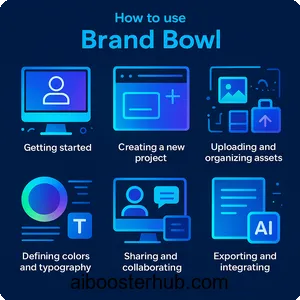
Getting started
To begin, visit the Brand Bowl website and create an account. The sign-up process is straightforward, requiring only basic information like your name and email. Once registered, you’ll gain access to the dashboard, where you can start a new project. The platform offers a free tier, so you can explore its features without any upfront commitment.
Creating a new project
From the dashboard, click “Create New Project.” Enter a project name, choose a brand personality (e.g., modern, playful, or professional), and set a public URL if desired. Brand Bowl’s AI will generate a project framework based on your inputs, providing a starting point for your brand guidelines. This process takes less than a minute, making it ideal for fast-paced workflows.
Uploading and organizing assets
Navigate to the “Assets” tab to upload logos, icons, or other brand materials. You can upload multiple logo variations, and Brand Bowl will automatically calculate clearspace for each. The platform’s AI organizes these assets into a clean, accessible layout, ensuring that you can find what you need quickly.
Defining colors and typography
In the “Colors” section, input HEX codes for your brand’s colors. Brand Bowl will generate RGB and CMYK equivalents and allow you to label each color. You can also designate primary colors to highlight their importance. For typography, select Google Fonts or upload custom fonts, then specify styles and weights. These settings are automatically incorporated into your brand book.
Sharing and collaborating
Once your brand guidelines are complete, use the “Share” feature to invite team members or clients to view the project. You can set permissions to control who can edit or provide feedback. Brand Bowl’s collaboration tools allow for real-time input, making it easy to refine guidelines based on team feedback.
Exporting and integrating
When your brand book is ready, export it as a polished document or integrate it with tools like Adobe Illustrator via the plugin. This ensures that your guidelines are ready for use in design projects or presentations. The platform’s cloud-based nature means you can access and update your brand book anytime, anywhere.
5. Practical applications of Brand Bowl
For freelance designers
Freelancers often juggle multiple clients, each with unique branding needs. Brand Bowl streamlines the process by providing a single platform to create, manage, and share brand guidelines. The AI-driven automation reduces repetitive tasks, allowing freelancers to deliver professional results faster and take on more projects.
For design agencies
Agencies benefit from Brand Bowl’s scalability and collaboration features. The platform allows teams to centralize assets, maintain consistency across client projects, and streamline feedback loops. This is particularly useful for agencies handling large portfolios, as it ensures that every project adheres to high branding standards.
For small businesses
Small businesses with limited design resources can use Brand Bowl to create professional brand guidelines without hiring a designer. The platform’s user-friendly interface and AI assistance make it easy to produce polished brand books that rival those of larger companies, helping small businesses stand out in competitive markets.
For marketing teams
Marketing teams can leverage Brand Bowl to ensure that campaigns align with brand guidelines. By centralizing assets and guidelines, the platform helps marketers maintain consistency across social media, advertisements, and other channels, enhancing brand recognition and trust.
6. Why Brand Bowl stands out in the AI branding landscape
Comparison with other AI branding tools
While other AI branding tools, such as Brandolia or Brandblast, focus on specific aspects like logo creation or social media content, Brand Bowl offers a comprehensive solution for brand guideline creation. Its ability to handle logos, colors, typography, and collaboration in one platform sets it apart from competitors that require multiple tools to achieve the same results.
Focus on user experience
Brand Bowl’s intuitive interface and AI-driven automation make it accessible to users of all skill levels. The platform’s design prioritizes simplicity without sacrificing functionality, ensuring that users can create professional brand books without a steep learning curve. This focus on user experience is a key differentiator in the crowded AI tool market.
Commitment to data privacy
Brand Bowl takes data privacy seriously, adhering to GDPR regulations and using secure servers hosted by Amazon Web Services in Ireland. The platform does not sell user data or use it for marketing, ensuring that your brand assets remain safe and confidential. This commitment to privacy builds trust, especially for businesses handling sensitive client information.
Future potential
As AI technology evolves, Brand Bowl is well-positioned to incorporate new features, such as advanced analytics or deeper integrations with design software. Its cloud-based infrastructure and focus on automation suggest that it will continue to adapt to the needs of designers and businesses, making it a future-proof solution for branding.
7. Conclusion
Brand Bowl is a powerful tool for anyone looking to streamline the creation of branding guidelines. By leveraging AI to automate tasks, centralize assets, and enhance collaboration, it saves time, ensures consistency, and empowers users to focus on creativity. Whether you’re a freelancer, agency, small business, or marketing team, Brand Bowl offers a versatile, user-friendly solution that delivers professional results. With its robust features and commitment to privacy, it’s a standout in the AI branding landscape, poised to shape the future of brand management. Explore Brand Bowl today and discover how it can transform your branding process.


